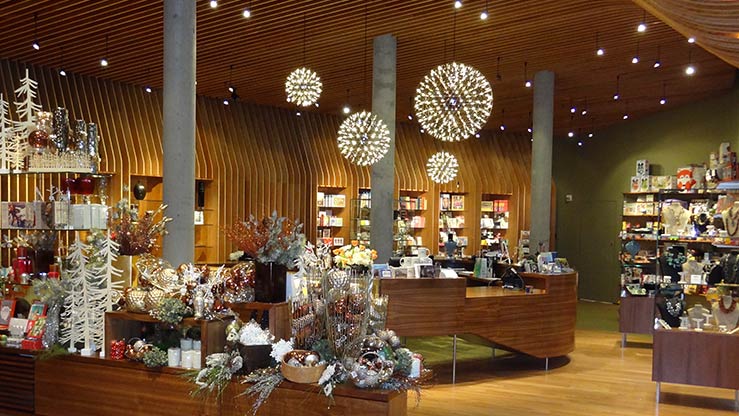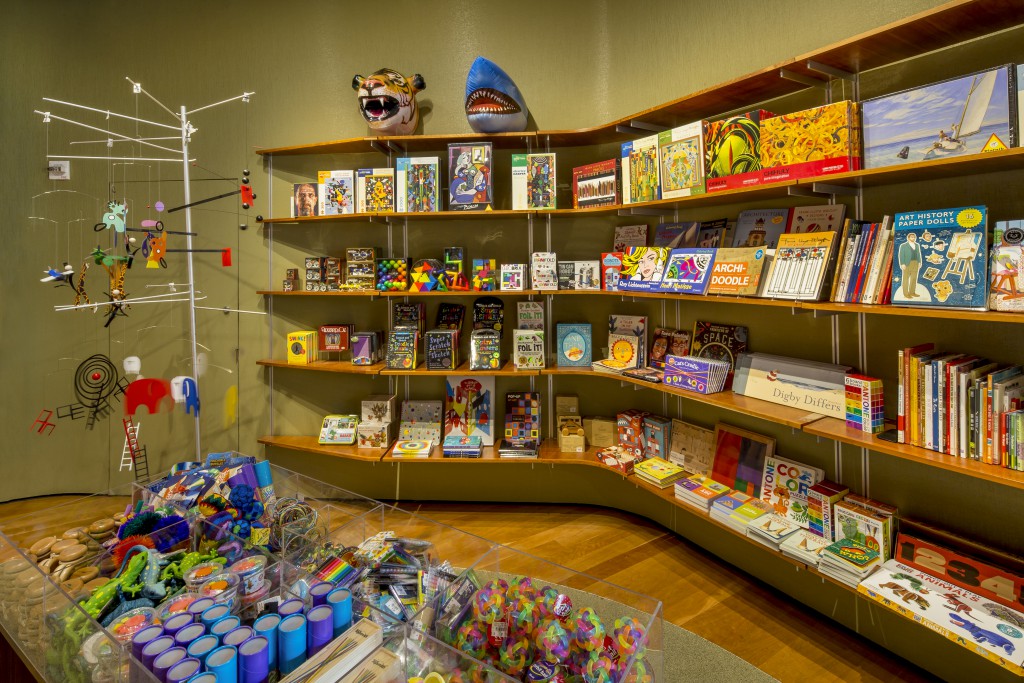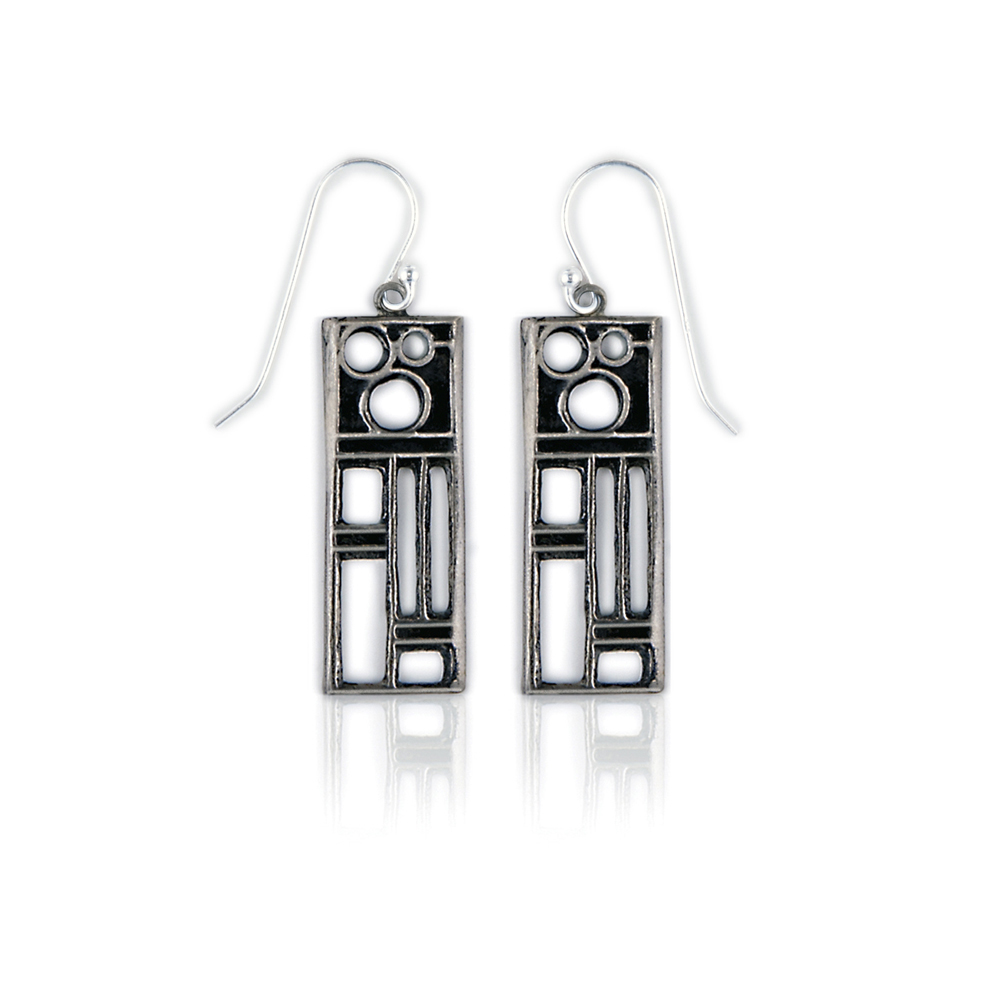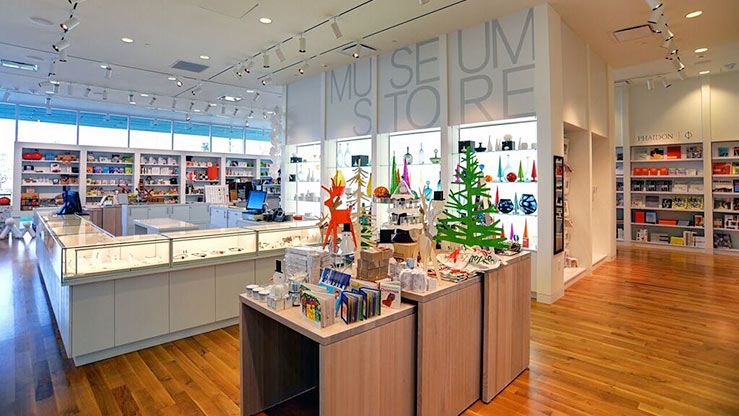
This is a complimentary copy of an article from the August/September 2016 issue. Click here to subscribe to Professional Artist, the foremost business magazine for visual artists, for as low as $32 a year.
Museum stores are great for a certain kind of artist. Are you one of them?
I’m one of those people who visits museums alone. I don’t go by myself because I’m deep and I need to brood undisturbed before the bronzes. The truth is, my museum trips begin not in a hushed gallery, but with an embarrassingly long gander at everything in the museum store.
One store with a particularly compelling siren song is the tiny shop at the Fowler Museum at the University of California, Los Angeles, devoted to exploring global arts and culture. The Fowler’s 400 square feet are filled with exotic finery in all price ranges. Intricate mosaic-like beaded chokers handmade by the Maasai women of Africa live alongside gem pendants of druzy quartz. Funky folk art metal mirrors from Mexico framed with tin can roses sit atop shibori-dyed scarves.
“Store managers/buyers would tell you that the upper-end product, the handmade art, is integral to the impression and impact a store makes,” said museum store consultant Andrew Andoniadis (museumstoreconsult.com). Just who are the artists who sell their work in such lush settings? Do they make a good living? And how did they get their work in the door?
You may need the help of the secret service to even get the name of the jewelry buyer at monolithic museums like the Getty. “Everyone who’s a decision maker in those big shops is trying to protect themselves from getting flogged by PR people, so they must have gatekeepers,” said Carolyn Edlund, (artsbusinessinstitute.org) executive director of the educational nonprofit Arts Business Institute (ABI). “Museum shops like the Smithsonian, who I used to sell to, get thousands of solicitations per day.” Andoniadis thinks artists new to museum stores could begin by targeting smaller, local museum shops they have some connection to.
Small museum shops hold oceans of opportunity for the right kind of artist. Kathy DiGenova, the buyer at the Fowler said, “Surprisingly, I hardly get approached by artists at all. I can’t remember the last time someone asked for an appointment. I usually go online and out to area art fairs to find local work to carry in the shop.” Several other small and mid-size museum shop buyers I spoke to in Los Angeles said the same. It’s an open niche — but how does it work?
CONSIGNMENT VS. WHOLESALE
Most artists who sell to galleries or retail stores usually work under a consignment business model. Consignment involves getting paid by the retailer after your art is sold — “if your art sells, that is, and providing it hasn’t been damaged, lost or stolen,” Edlund said. When it comes to museum shops, Edlund champions wholesaling as opposed to consigning.
Wholesaling is defined as the act of selling goods to someone other than a retail customer. Edlund defines wholesaling as a way “for an artist to make an actual living. The whole point behind wholesaling to museum shops is you as an artist establish a relationship with your customers [museum shop buyers] and you get reliable, repeat orders that are presold or set at a firm net 30 [which gives the retailer 30 days after receipt of goods to pay in full]. A 10- to 15-year relationship with a museum store is not uncommon for artists.”
WHO IS CUT OUT FOR WHOLESALE?
With the exception of overly large or fragile work, almost any kind of reproducible art in any medium could be a contender for the right museum store, providing the art falls within the store’s price and product range. But almost any kind of artist may not be a contender for wholesale. If you only love to make intricate one-of-a-kind pieces, stay with galleries. If you want a production studio and are willing to partner with a museum shop buyer to create income for yourself and the shop, wholesaling may be perfect for you.
Metalsmith Evelyn Pelati (evelynpelati.com) saw her art sales expand and stabilize when she gradually cut down on consigning and retailing her “vintage-modern” jewelry and taught herself how to wholesale to midsize museum stores. Pelati vends her Arts and Crafts-period-inspired line of earrings and necklaces for both women and men to museum shops like: The Frank Lloyd Wright Home and Studio Museum Shop in Oak Park (shopwright.org), The National Building Museum Shop in Washington, D.C. (nbm.org), Taliesin Preservation in Spring Green, Wisconsin (www.taliesinpreservation.org), and Anneliese’s Bookstore at Taliesin West in Scottsdale, Arizona (taliesinpreservation.org/shop). One of Pelati’s largest museum accounts currently buys 60 or so pieces of jewelry from her every month.
“When I was retailing my jewelry to stores and at shows,” Pelati said, “I noticed over time there were certain pieces people repeatedly gravitated to.” Turns out Pelati’s customers loved what she loved. Her popular pieces had an archetypal quality that attracted clients, who, like Pelati herself, loved the history of architecture and identified with the period of the 1900s. “I had an idea to take these favorite pieces, create a collection around them and move them into the wholesale world where my business could branch out,” Pelati said. While she was mulling this over she made a valuable discovery attending a tradeshow.
METALSMITH MEETS MUSEUM STORE
“My jeweler friend let me help her set up her wholesale booth at the 2014 Buyers Market of American Crafts in Philadelphia,” Pelati said. “I learned a lot just hanging around. She suggested I go to an ABI workshop going on there where artists put out a sampling of their work for buyers to look at and anonymously comment on.” When Pelati received her assessment from buyers, several of them said museum shops would be a good place for her work. “I learned that I needed to set up a list of potential stores, and in researching that list I did find a lot of museum shops. I just started contacting them along with shops and galleries and everybody I could think of,” Pelati said. Ten museum stores later (evelynpelati.com/retailers), Pelati’s wholesaling dream has now come into full flower.
Before you investigate a store in person or online, find the museum’s mission statement on their website. ~ Thea Fiore-Bloom
Seven tips to help you begin your journey into museum stores include:
1. Don’t calculate — be yourself.
Don’t make art for a museum. Make your art first and then find your museum match. “I think it’s important that artists do what they love, what speaks to them. It shouldn’t be a calculated effort as in: ‘OK, I’m going to target this market and I’m going to create this work for that place.’ That doesn’t come through sincerely. People buy something because they know how much you loved making it,” Pelati said.
2. Get your past life on.
“I always joke — and it’s really only half a joke— that I’ve been reincarnated from another era because all my life I’ve identified so much with the houses, the design style, the clothing, and the jewelry of the Arts and Crafts and Deco periods,” Pelati said. “That’s why I was proud when I became a juried Roycroft Artisan.” The initial Roycroft community was active from 1894 to 1938 and produced some of the finest work of the Arts and Crafts movement.
There are as many styles of work as there are markets to place the work in. “If you like the sea, and your art celebrates that, your market could be aquarium shops. If you like flowers, it could be botanical gardens. If you make things for kids, it could be children’s museums,” Pelati said. Don’t worry if you have never seen anything like your potential line in a museum store. That may be a plus if your pieces enhance the museum’s mission.
3. Your mission is to understand their mission.
“Always ask yourself: ‘Why should they buy my work?’” Edlund said. If you want to sell to museum stores, visit local favorites and look at the price ranges. Before you investigate a store in person or online, find the museum’s mission statement on their website. Look at the objects the store carries and see how each connects to the store’s mission. Mission matters because museum buyers usually won’t buy if it doesn’t meet their mission, for fear of violating Unrelated Business Income Tax (UBIT) laws. “In layman’s terms, UBIT is a part of the federal tax code that allows institutions to not pay sales tax on products that are related to either an exhibit, or the mission of the museum,” Andoniadis said.
Don’t make art for a museum. Make your art first and then find your museum match. ~ Thea Fiore-Bloom
4. Partner with your museum store buyer.
Research your dream museum’s permanent collection, ongoing programs, as well as their upcoming special exhibitions. If your work coordinates with a future exhibit, prepare a targeted pitch well in advance. You can also help the store educate museum-goers by including appropriate explanatory material with your art. “If you’re talking to a Civil War Museum in Texas and you have these great Civil War-inspired mugs they want to sell,” Edlund said, “you can custom-print hang tags that highlight the connection to a battlefield or building, specifically on their property. Then you’re going above and beyond. Buyers appreciate that. This also helps sell your work in store.”
5. Remember your p’s and q’s: price and quantity.
“To succeed in wholesale you need to create in quantity. Your work will be handmade, each piece slightly different — therein lies its beauty — yet similar enough to be consistent and meet the needs of the shop,” Edlund said. “It also really helps me if an artist has different pieces of work in a range of prices,” DiGenova said. “The least expensive item I carry is $1 and the most expensive item I have is $2,200. There’s my range for the store.”
6. Experience a trade show.
Visit a trade show. “If you get in touch with the promoter and say, ‘I’m interested in being an exhibitor and would like to walk the show first,’ you will probably be allowed in as a guest,” Edlund said. She suggests The American Made Show (americanmadeshow.com), New York Now’s wholesale section (nynow.com) or The American Craft Council show (craftcouncil.org) on wholesale days. She also suggests considering membership in the American Alliance of Museums (aam-us.org) and The Museum Store Association (museumstoreassociation.org).
7. Get help tackling the learning curve.
Museum stores have a steep learning curve. “Don’t take initial rejection personally, it comes with the territory,” Pelati said. With trial and error, you’ll figure out who you need to market what to when. “Most museum store buyers think artists are wonderful, but museum stores also have bottom lines, so for artists to succeed here, they need to understand things like competitive, fair, pricing for value,” Andoniadis said. If you want to learn how to best price your work, convert your studio into a production studio or get up to speed on billing options, consider taking a course, such as How to Wholesale: A Step-by-Step Guide for the Creative Entrepreneur (artsbusinessinstitute.org/abi-wholesale-academy).
Research your dream museum’s permanent collection, ongoing programs, as well as their upcoming special exhibitions. ~ Thea Fiore-Bloom
More Than Money
The benefits of wholesaling to museum stores extend beyond the monetary. “A woman once purchased a necklace of mine from Taliesin West,” Pelati said. “My jewelry comes with a care card that tells a story about how the piece was made. No contact information — stores don’t like that. But somehow this woman tracked me down and emailed me to tell me how much she loved it. That moved me. Obviously, she went and took in a place that spoke to her — she was so happy there. She was able to bring home something that reminds her of what she felt when she was there. She can put that little necklace on when she wants to feel that feeling again. For me — that’s what it’s all about.”
Thea Fiore-Bloom is a freelance writer, artist, teacher and literacy volunteer with a Ph.D. in mythology. Fiore-Bloom’s work is inspired by archaeology, architecture, museums, and the objects and stories of the people she meets in her own backyard. She welcomes mail at her website theafiorebloom.com.







[…] Title: “Sell Your Art in Museum Stores” Professional Artist Magazine Description: Article by by Thea Fiore Bloom, August 17, 2016. URL: http://www.professionalartistmag.com/2016/aug/17/sell-art-museum-stores […]
[…] Title: “Sell Your Art in Museum Stores” Professional Artist Magazine Description: Article by by Thea Fiore Bloom, August 17, 2016. URL: http://www.professionalartistmag.com/2016/aug/17/sell-art-museum-stores […]
Comments are closed.